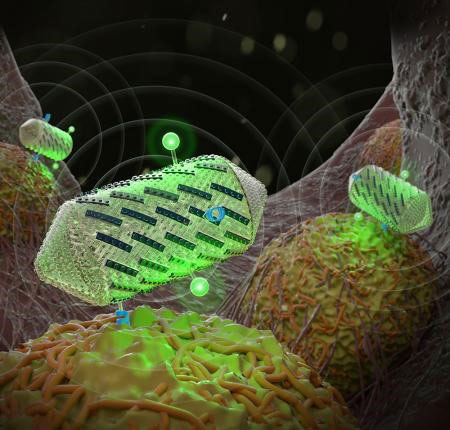We introduce gas vesicles - genetically encoded hollow nanoproteins from buoyant photosynthetic microbes - as a molecular engineering platform for multimodal ultrasound imaging. By means of chemical and genetic engineering, we successfully tuned the mechanical, acoustic, surface, functional and targeting properties of gas vesicles to enable harmonic, multiplexed, and multimodal ultrasound imaging.
For the full story see the press release from the California Institute of Technology

Figure: Illustration of acoustic protein nanostructures known as gas vesicles, whose hollow, gas-filled interiors enable them to scatter sound waves and thereby become visible to ultrasound. The gas vesicle's protein shell accommodates new components that can be engineered at the genetic level and “snapped on” to the nanostructure to tune its acoustic properties, to make it fluorescent, or to target it to cancer cells. Image courtesy of Barth van Rossum (ACS Publications).
Reference
Molecular engineering of acoustic protein nanostructures. Lakshmanan A, Farhadi A, Nety ST, Lee-Gosselin A, Bourdeau RW, Maresca D, Shapiro MG*. ACS Nano 10, 7314-22 (2016).


































